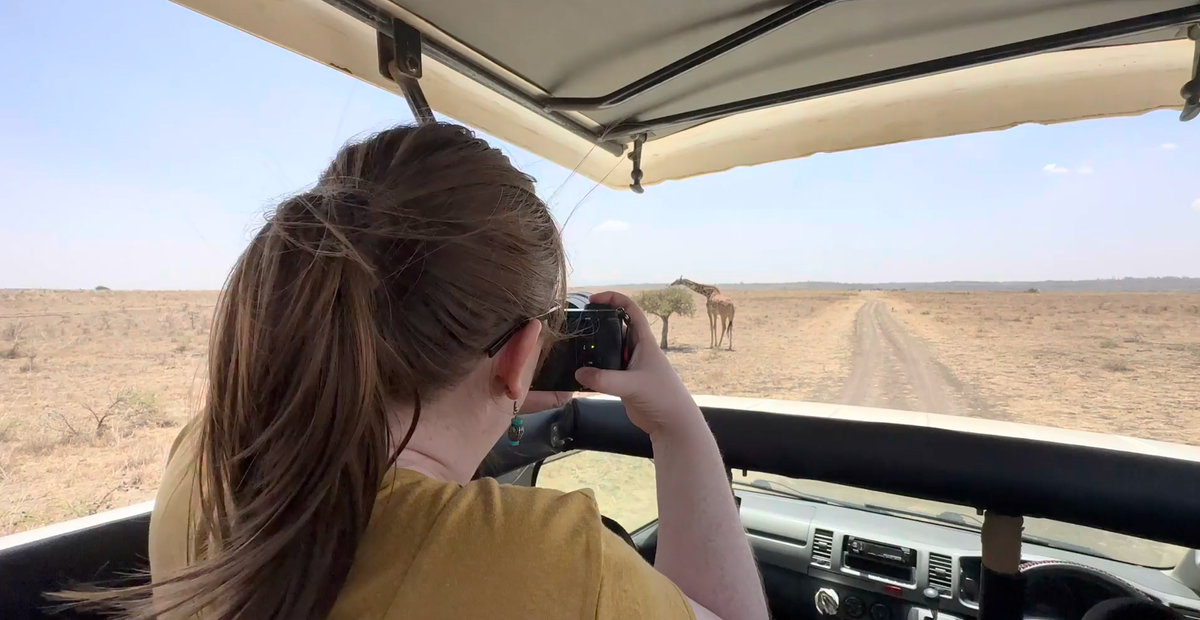Sometimes, it can take longer to find the right footage for a video story than it takes to write a script or do the edit. In this guide, we'll walk you through where to find free, open-license footage and how to use it.
The first thing to know about the availability of open licensed and Creative Commons footage is that it can be quite limited. Especially when you're doing reports on really niche topics. There are large gaps in terms of what's available out there. We wrote more about why that's a problem and what the potential solutions are here.
But if you're working on more general videos, like explainer videos, open-license footage can be plentiful. We've used free footage for stories on climate change, the palm oil industry, heatwaves, overfishing, mining and more.
While looking for the footage, we need to take into consideration the type of license or copyright they're published under. Videos on different websites will often have different types of licenses, which tell you what rights you have to use the footage. Copyright licenses and laws are meant to protect the financial and ethical interest of the content that is published online. It is a way for the creator of that content to communicate how a file (audio, video, text or other medium) can or cannot be reused, modified or monetised.
Disclaimer: If you're not familiar with copyrights and licenses, it might be worth checking in with a colleague or lawyer about what your publications' guidelines are and what the platforms permit.
Lets look at the platforms and what they say about the footage available on them.
Pexels
Pexels is a free stock footage and photos website. Anyone can contribute to it, though all clips go through a manual review before they're made public on the website. Pexels has its own license which allows anyone to use and make changes to the footage and photos for free. Attribution is not required, though as journalists it's always good to give credit, so we recommend you attribute anyway. Pexels has a great variety of footage, though it is worth noting that not everything that's been published on their website shows up when you search relevant terms. Pexels only selects the clips they like best to feature in their search result. So you may have to go digging into peoples' profiles to find what you're looking for rather than always depend on search.
Pixabay
Pixabay is very similar to Pexels, though it does have some added features. For example, you can also find copyright free music, sound effects, illustrations and gifs. The content is free to use, with no attribution required. Under their list of permissions, users are also allowed to modify the content.
InOldNews Open Journalism Project
In 2022, we launched our own free footage library. All clips are published under a CC BY license, which means they are free to use as long as you credit where you got the footage from. We work with journalists all over the world to build this library, so you'll find information about who to credit for each clip in the description. The clips cover a variety of topics, from environment to politics to history and more.
Thanks to a grant from Internews' Earth Journalism Network (EJN) and The Swedish International Development Cooperation Agency (Sida) we've also got a folder of climate change-related visuals [inold.news/ccc] with more than 700 clips from more than 10 countries.
Open Planet
Open Planet is a footage library of climate change related visuals that is free to use for educational purposes. So, Open Planet's clips can only be used for non-commercial purposes. This means you can't run ads on videos that include their footage. They publish footage from their partners, which includes production houses and universities. Some of the footage they've published has even been used for Netflix productions.
Greenpeace
Greenpeace has an extensive library of footage and photos from around the world. It even has some historical footage dating back to the 1970s. You can find anything from natural disasters, to mining, to over-fishing, to environmental protests. While the footage is free for journalism purposes, there are some steps you need to follow, especially if you want high resolution clips. You'll first have to create an account. Then, you can add the visuals you want to your cart. When you're ready to check out, you'll have to fill out some details about why you need the footage and where you're publishing. The team working on the library will then give you access to higher resolution visuals. Usually, they are fairly quick to respond. They are based in the UK, so keep the time difference in mind when making a request.
NASA
NASA's Image and Video library has a lot of clips on environmental issues like climate change. They've also got lots of animated graphics like temperatures rising over decades and sea ice melting. In their Usage Guidelines they state that the videos are free to use for educational purposes, and that 'news outlets, schools, and text-book authors may use NASA content without needing explicit permission'. They do occasionally publish copyrighted content from third parties, but the NASA library marks those clips as copyright protected.
It is always worth double-checking the license listed on the web page of every clip. On some platforms, different clips have different licenses or credits. So, you have to check on every clip if the type of copyright is okay for your publication and who you are required to credit.
Kogia
If you're looking for ocean-specific photos and videos. They've got great underwater footage of whales, seals, turtles and so much more. All you have to do is sign up for a free membership and share some details about how you plan to use the library.
Wikimedia
Wikimedia is a good source for archival photos, and does offer some video footage as well. The catch is that it will often provide the video in an inconvenient format like WebM. So you'll have to convert the file, which you can do with a free tool like Handbrake. Content published on Wikimedia is also published under different licenses, so you have to check each individual clip. You can also filter your search by different types of licenses.
Flickr
When you're really struggling to find visuals, Flickr can be a good backup. Flickr is a website used by photographers and videographers to showcase their work. You do have to be careful not to use copyrighted images, though. So when you're searching, make sure you filter your search for 'Commercial use & mods allowed'. You can also filter for just photos or just videos.
Archive.org
The Internet Archive is a useful source for historical TV reports and other footage. Some of it is published under Creative Commons licenses, some of it isn't. On their website, they state, "The Internet Archive does not make guarantees as to the copyright status of items on archive.org." To check if you have the rights to use a specific video, you can read the description under the video. If you're not sure about rights on a specific clip, it's better to be safe than sorry.
Nevertheless, this is a good place to start your search for media published under public domain or CC0 — which means anyone can use, modify or monetise the content. Every year, more and more copyrighted content becomes available under this license and should be okay to use.
These are just some of the many sources of free stock videos that are worth checking out. Others include sites like Videvo and Videezy. Their offerings and features are similar to the likes of Pexels and Pixabay.
There are lots of ways to keep telling video stories, even when you can't go to the field. It's also always worth checking with universities, researchers and NGOs if they have footage you can use. We hope these resources will be useful. And if we missed any sites, let us know by emailing editor [at] inoldnews.com.



